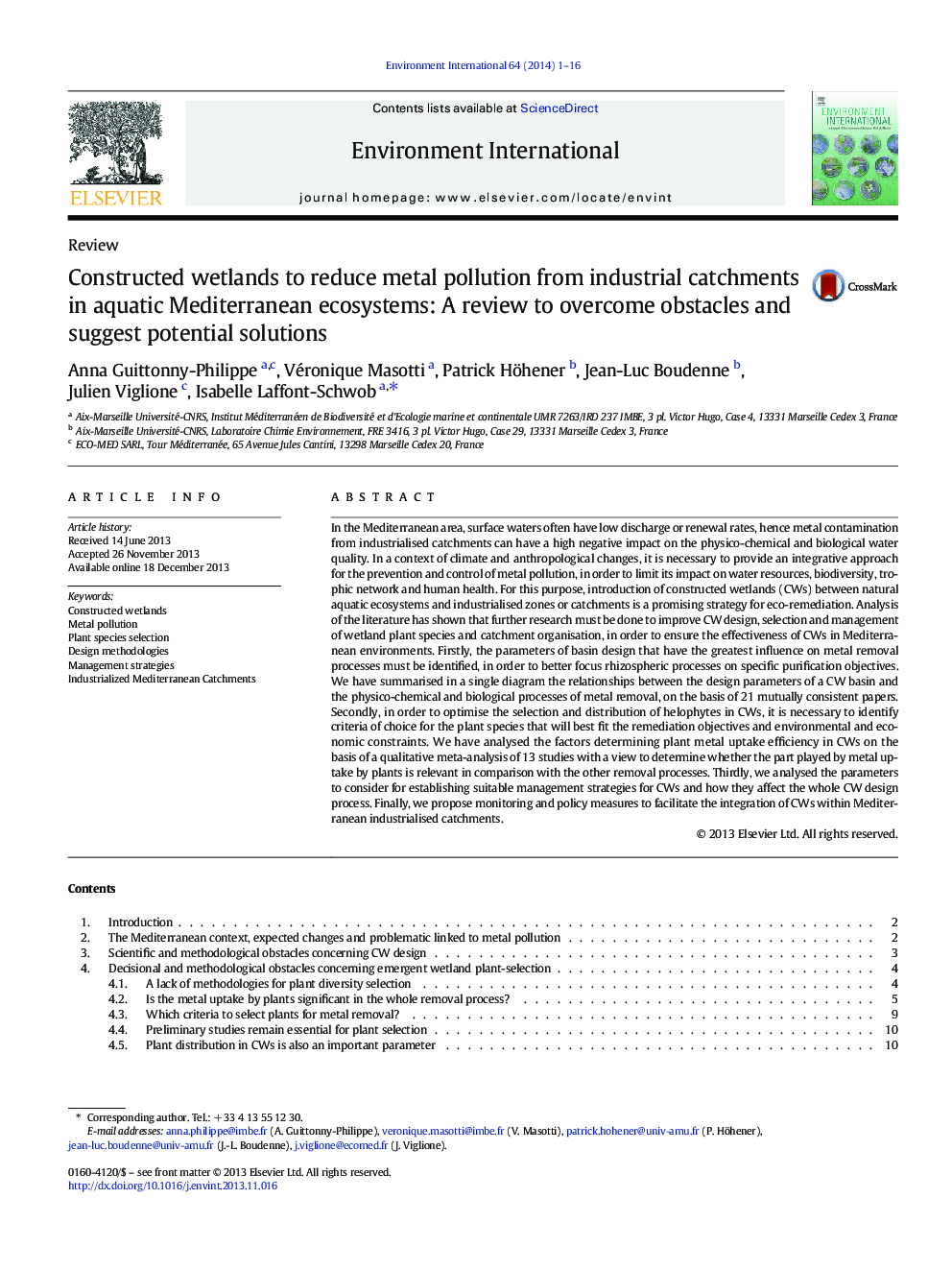| کد مقاله | کد نشریه | سال انتشار | مقاله انگلیسی | نسخه تمام متن |
|---|---|---|---|---|
| 4422783 | 1619064 | 2014 | 16 صفحه PDF | دانلود رایگان |
• Constructed wetlands may serve to protect ecosystems impacted by metal pollution.
• Methodological, technical and organisational obstacles limit their implementation.
• We suggest paths for improving the design of CWs for metal removal.
• We propose criteria of plant species selection, distribution and management in CWs.
• An integrated organisational approach for industrialised catchments is proposed.
In the Mediterranean area, surface waters often have low discharge or renewal rates, hence metal contamination from industrialised catchments can have a high negative impact on the physico-chemical and biological water quality. In a context of climate and anthropological changes, it is necessary to provide an integrative approach for the prevention and control of metal pollution, in order to limit its impact on water resources, biodiversity, trophic network and human health. For this purpose, introduction of constructed wetlands (CWs) between natural aquatic ecosystems and industrialised zones or catchments is a promising strategy for eco-remediation. Analysis of the literature has shown that further research must be done to improve CW design, selection and management of wetland plant species and catchment organisation, in order to ensure the effectiveness of CWs in Mediterranean environments. Firstly, the parameters of basin design that have the greatest influence on metal removal processes must be identified, in order to better focus rhizospheric processes on specific purification objectives. We have summarised in a single diagram the relationships between the design parameters of a CW basin and the physico-chemical and biological processes of metal removal, on the basis of 21 mutually consistent papers. Secondly, in order to optimise the selection and distribution of helophytes in CWs, it is necessary to identify criteria of choice for the plant species that will best fit the remediation objectives and environmental and economic constraints. We have analysed the factors determining plant metal uptake efficiency in CWs on the basis of a qualitative meta-analysis of 13 studies with a view to determine whether the part played by metal uptake by plants is relevant in comparison with the other removal processes. Thirdly, we analysed the parameters to consider for establishing suitable management strategies for CWs and how they affect the whole CW design process. Finally, we propose monitoring and policy measures to facilitate the integration of CWs within Mediterranean industrialised catchments.
Journal: Environment International - Volume 64, March 2014, Pages 1–16
